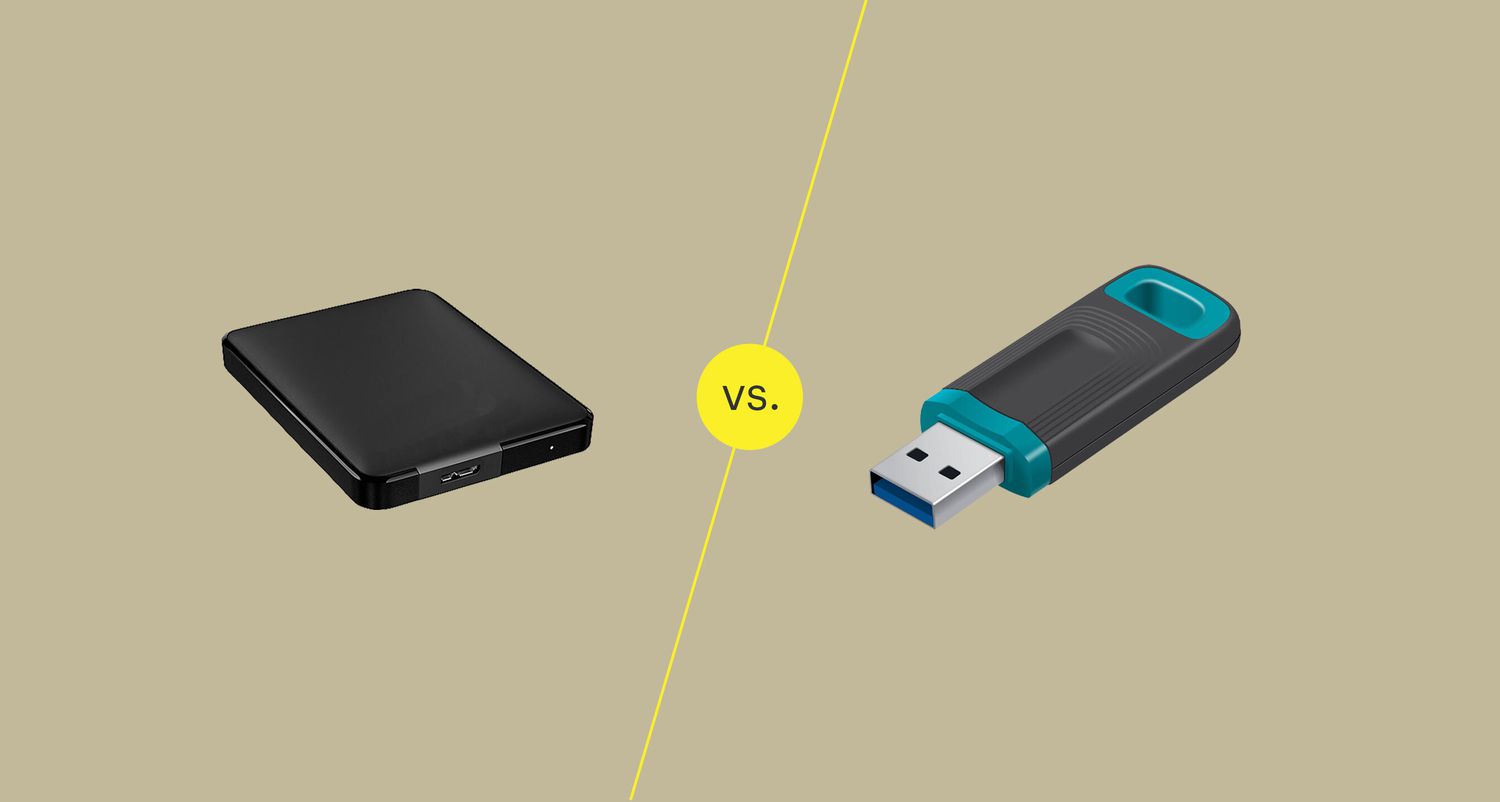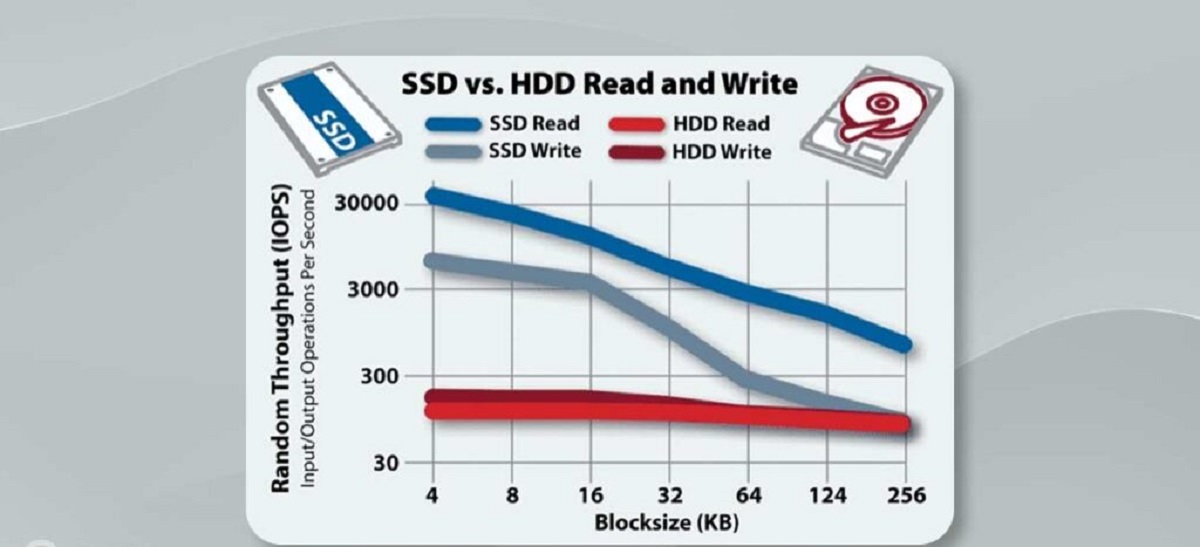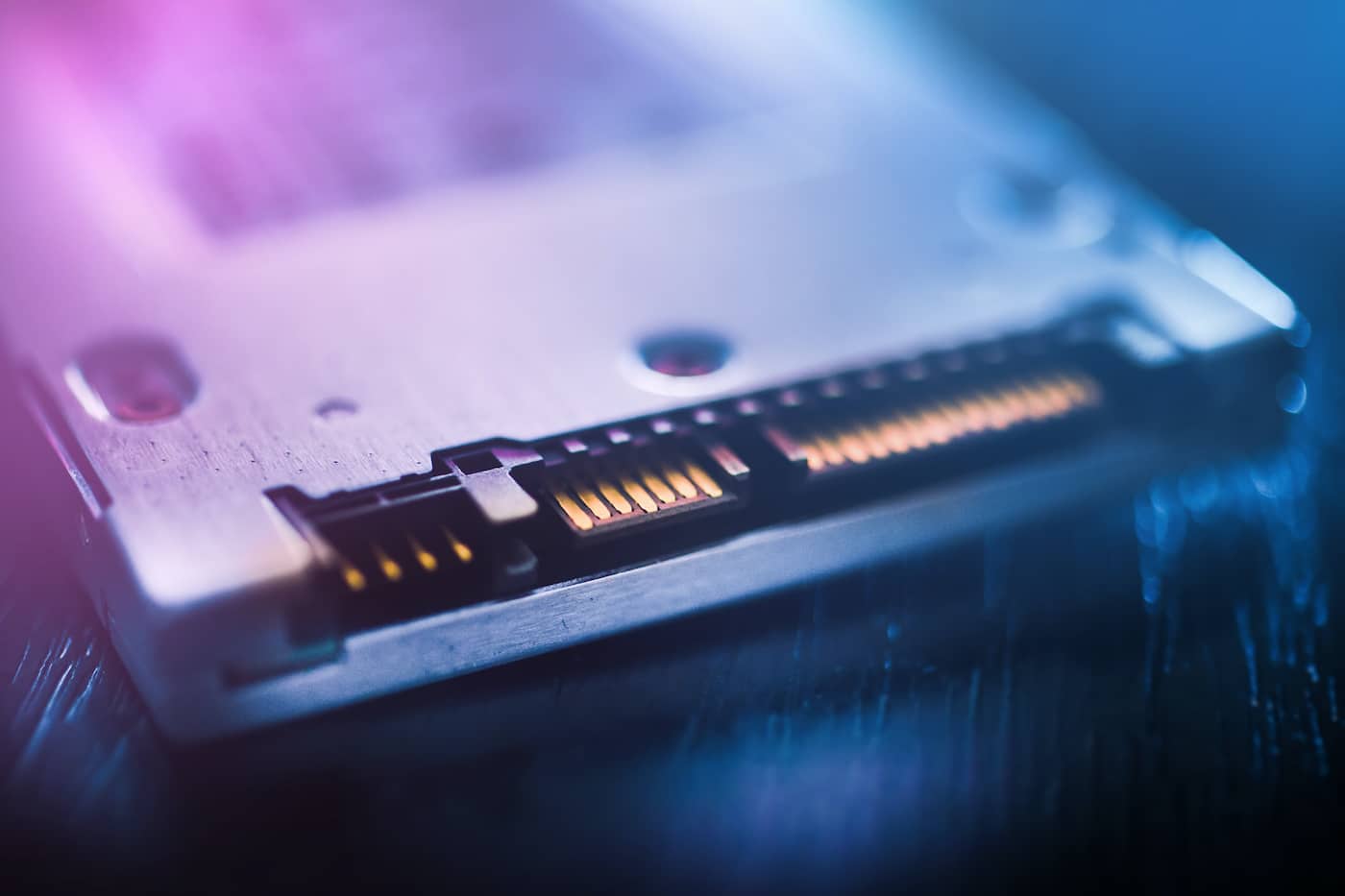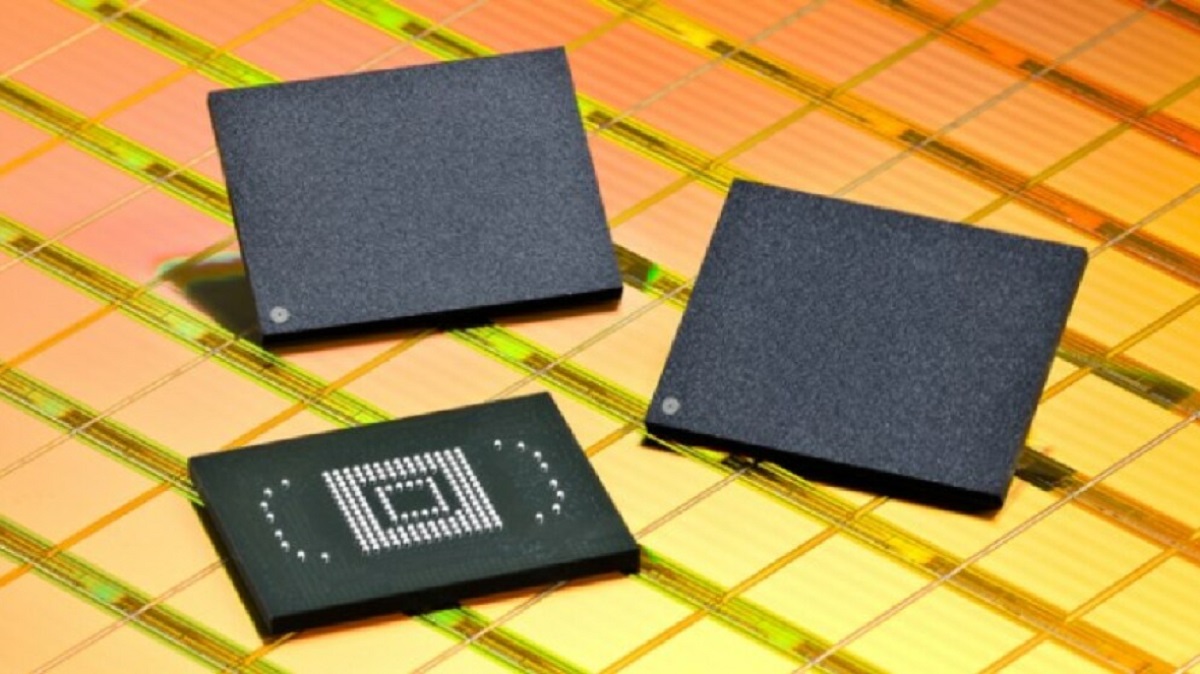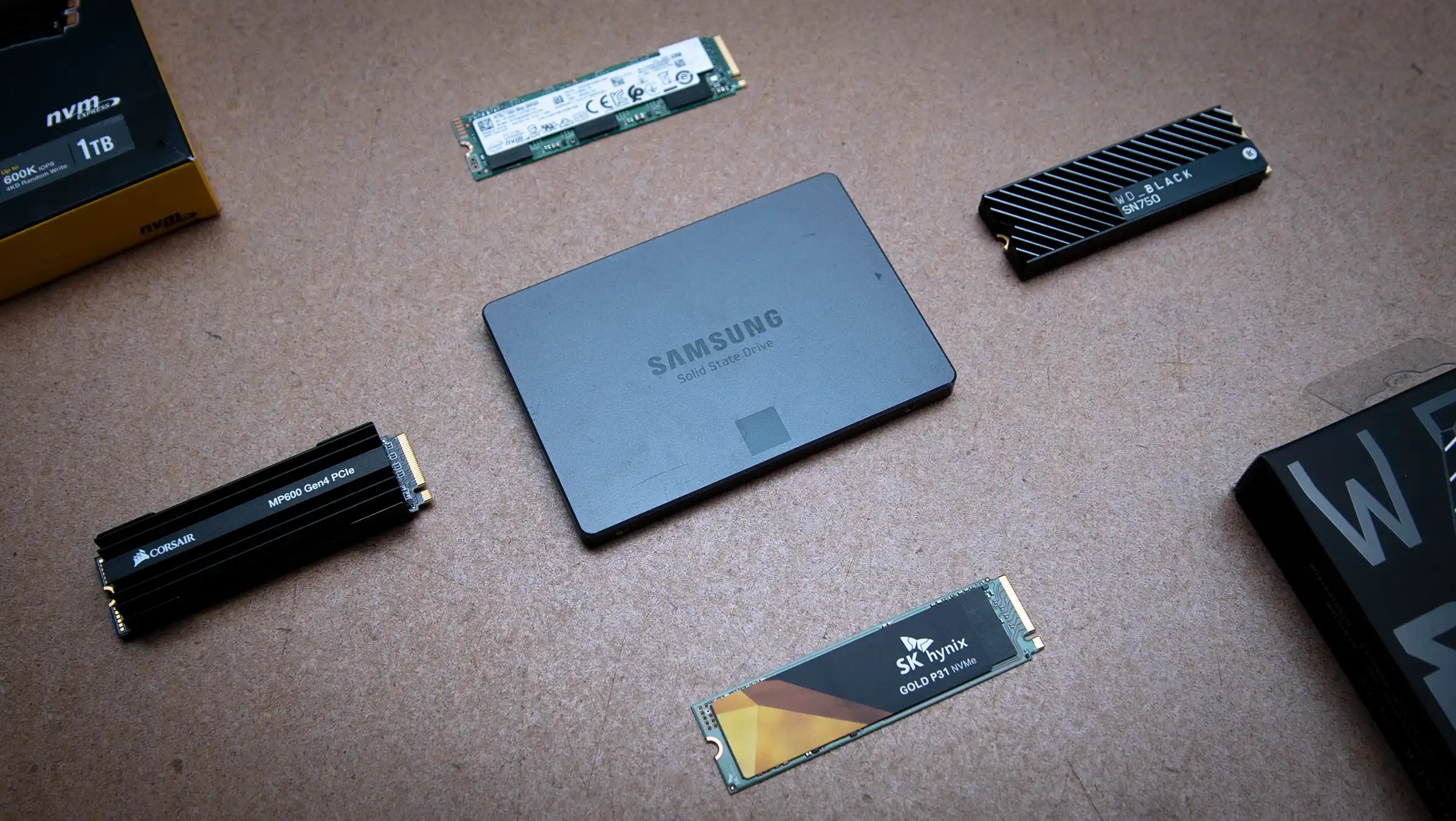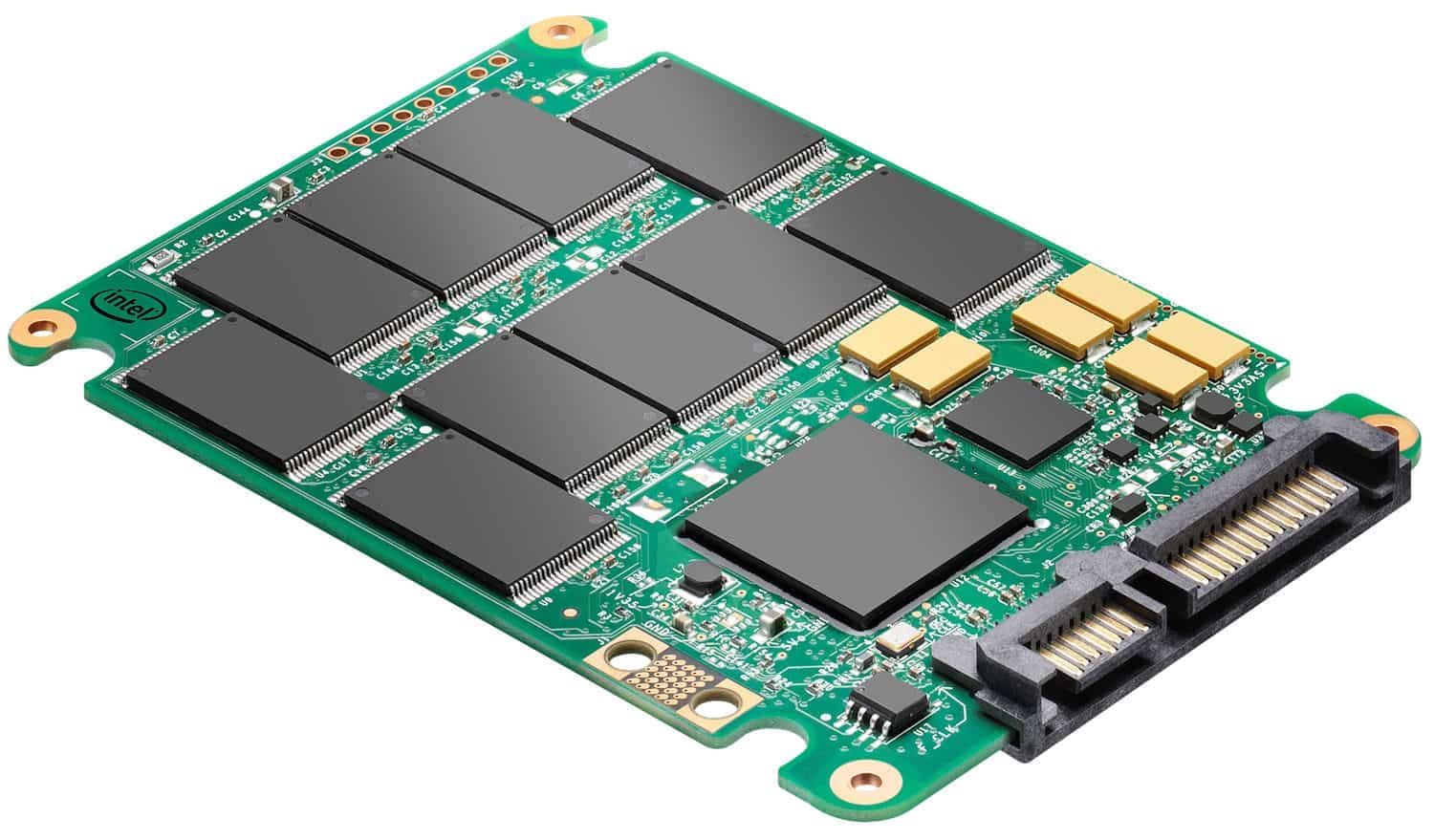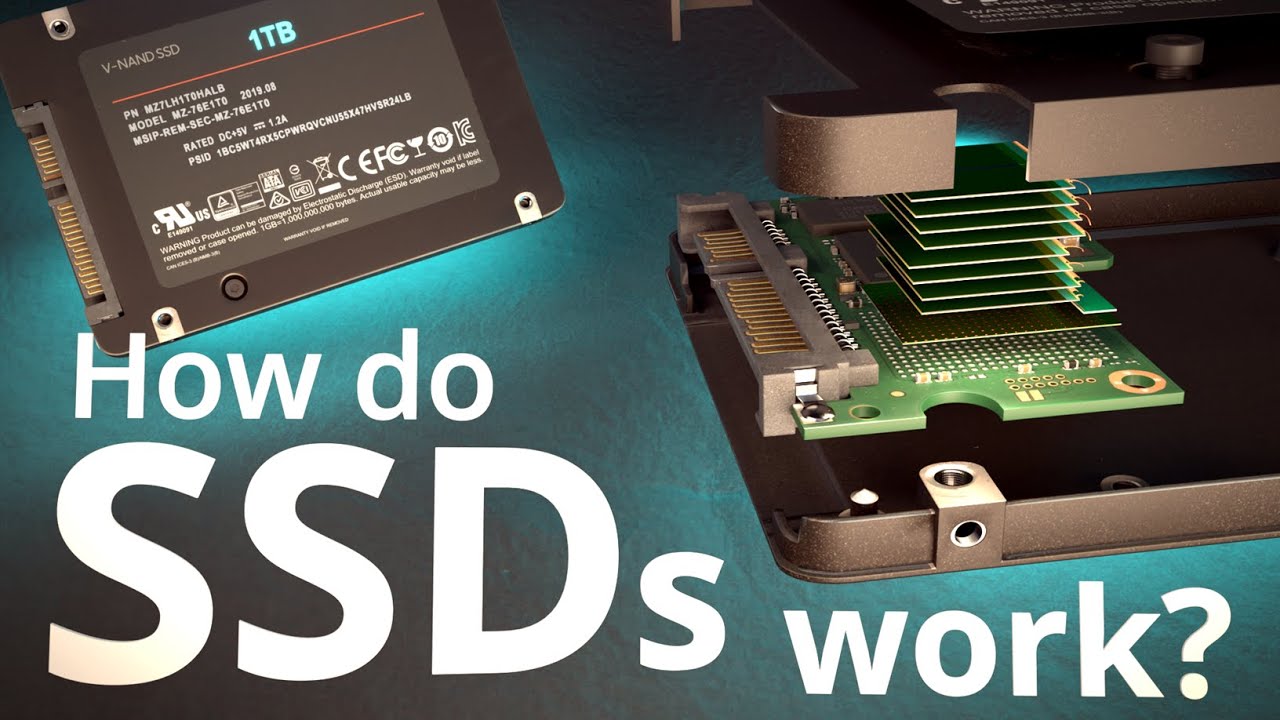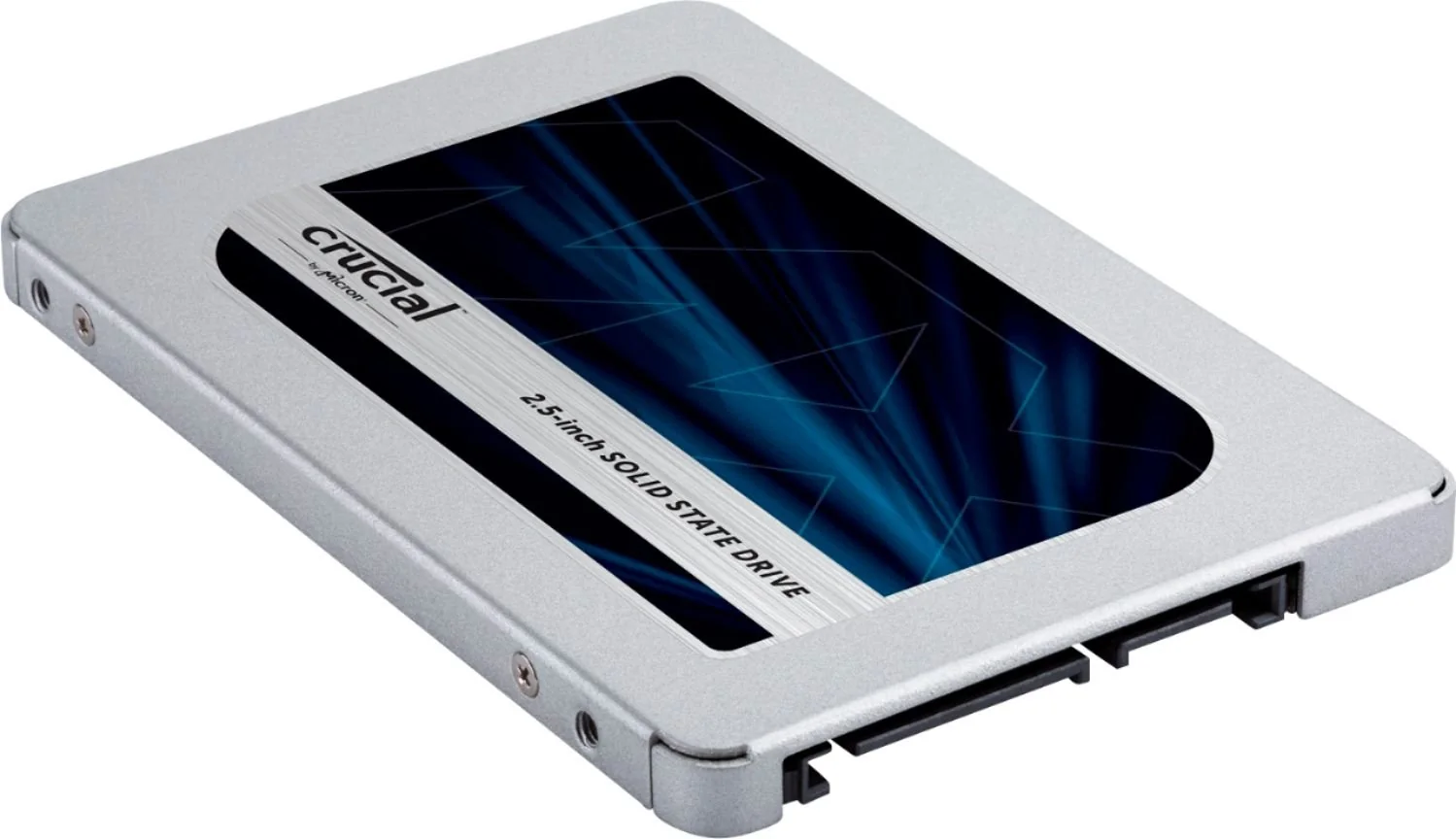Introduction
When it comes to data storage options, two terms that often come up are SSD and flash storage. These technologies have revolutionized the way we store and access data, making traditional mechanical hard drives a thing of the past. But what exactly are SSD and flash storage, and what sets them apart?
SSD, short for solid-state drive, and flash storage are both non-volatile storage devices that use semiconductor chips to store data. However, there are some key differences between the two that make them suited for different purposes.
In this article, we will explore the nuances of SSD and flash storage, their working mechanisms, and the notable differences between them. Whether you’re a tech enthusiast, a business owner looking for storage solutions, or simply someone curious about the underlying technology, this article will provide you with a comprehensive overview of SSD and flash storage.
By the end of this article, you will have a better understanding of the advantages and disadvantages of each technology, which will help you make informed decisions when it comes to choosing the right storage solution for your needs.
Definition of SSD
A solid-state drive (SSD) is a type of storage device that uses flash memory to store data. Unlike traditional mechanical hard drives, which rely on spinning disks and read/write heads to access data, SSDs have no moving parts. Instead, they utilize integrated circuits to store and retrieve data quickly and efficiently.
SSDs are known for their speed, durability, and reliability. They have become increasingly popular in recent years due to their superior performance compared to traditional hard drives. SSDs offer faster boot times, quicker file transfers, and snappier application loading times.
In terms of physical appearance, SSDs often resemble small rectangular chips, similar to RAM modules. They are typically connected to a computer’s motherboard using SATA (Serial ATA) or PCIe (Peripheral Component Interconnect Express) interfaces.
SSDs store data using NAND flash memory, a type of non-volatile memory that retains data even when the power is turned off. NAND flash memory is organized into pages, which are then grouped into blocks. Data can be written to and read from these blocks independently.
One notable advantage of SSDs is their random access time. Unlike traditional hard drives, which rely on mechanical movements to access data stored on spinning disks, SSDs can retrieve data from any location on the drive almost instantly. This makes SSDs ideal for applications that require quick access to large amounts of data, such as gaming, video editing, and database management.
Overall, SSDs offer several advantages over traditional hard drives, including improved speed, reliability, and durability. As technology continues to advance, SSDs are becoming more affordable and accessible, making them an attractive choice for both personal and professional use.
Definition of Flash Storage
Flash storage refers to a data storage technology that uses flash memory chips to store and retrieve data. It is a type of solid-state storage like SSDs, but flash storage can encompass various forms and formats beyond traditional SSDs.
Flash memory is a type of non-volatile memory that retains data even when the power is turned off. It is made up of floating-gate transistors, which store electrical charges to represent the binary values of data. These transistors can be programmed to store and retrieve data electronically, providing fast and reliable access to stored information.
Flash storage can be found in different devices, including USB flash drives, memory cards, and embedded storage in devices such as smartphones, cameras, and tablets. It is a versatile form of storage that offers high-speed data transfer rates, compact size, and durability.
USB flash drives are perhaps the most well-known type of flash storage. These portable storage devices utilize a small USB connector and contain a flash memory chip. They allow users to store and transfer files conveniently, making it easier to transport important data between devices.
Memory cards are another popular form of flash storage. Commonly used in digital cameras, smartphones, and other portable devices, memory cards provide expandable storage options for capturing photos, videos, and other media. They come in various formats such as Secure Digital (SD), MicroSD, and CompactFlash, offering different storage capacities and data transfer speeds.
Flash storage is also widely used in solid-state drives (SSDs). SSDs employ flash memory chips to store data and can be connected to a computer’s motherboard via SATA or PCIe interfaces. SSDs offer higher performance and faster data access compared to traditional mechanical hard drives, making them ideal for applications that require rapid data transfer and reduced latency.
Overall, flash storage offers a reliable and efficient means of storing and retrieving data. It has become an indispensable part of our digital lives, allowing us to carry valuable information in our pockets and power the high-performance devices we rely on daily.
How SSDs Work
To understand how solid-state drives (SSDs) work, it’s important to first comprehend the basic principles of flash memory technology. SSDs utilize NAND flash memory, which is a type of non-volatile memory that retains data even when the power is turned off.
SSDs consist of several flash memory chips organized into a controller and storage cells. The controller acts as the brain of the SSD, managing data storage, retrieval, and overall performance. It communicates with the computer’s operating system to process read and write commands.
When data is written to an SSD, the controller instructs the storage cells to store electrical charges, which represent the binary values of the data. These cells consist of two states: a high charge representing the binary value of 1, and a low or erased state representing the binary value of 0.
Writing data to an SSD involves two main operations: erase and program. When new data needs to be written, the controller first erases the target storage cells by applying an electrical voltage to reset the charges to their low or erased state. Then, using a process called programming, the controller applies voltage to the desired cells to store the data by changing the charge level to a high state.
Reading data from an SSD involves a different process. The controller detects the electrical charges stored in the cells and determines their binary values. By passing a current through the storage cells, the controller measures the level of charge and interprets it as the binary value of the stored data. The controller then sends the retrieved data to the computer for processing.
SSDs also utilize various techniques to improve performance and enhance reliability. One such technique is wear leveling, which evenly distributes write operations across the storage cells to prevent certain cells from wearing out faster than others. This helps prolong the lifespan of the SSD. Additionally, SSDs employ error correction codes (ECC) to detect and correct errors that may occur during data storage or retrieval.
Overall, the design and functionality of SSDs make them a highly efficient and reliable form of storage. The absence of moving parts allows for faster data access speeds, increased durability, and reduced power consumption compared to traditional hard drives. As a result, SSDs have become the preferred choice for users seeking improved performance and reliability in their storage solutions.
How Flash Storage Works
Flash storage, utilizing flash memory technology, serves as a reliable and efficient means of storing and retrieving data. Understanding how flash storage works requires a grasp of the underlying principles of flash memory and its organization within storage devices.
At its core, flash storage employs NAND flash memory, a type of non-volatile memory that retains data even when the power is turned off. NAND flash memory is comprised of floating-gate transistors, which store electrical charges to represent the binary values of data.
Flash storage devices consist of multiple flash memory chips, controlled by a controller, inside a compact and often portable form. When data is written to flash storage, the controller manages the process of storing electrical charges in the appropriate NAND cells by programming the transistors. This programming process modifies the charge level, thereby storing the binary values of the data.
Reading data from flash storage involves the controller detecting and interpreting the electrical charges present in the NAND cells. By applying a voltage and measuring the resulting current, the controller can determine the charge level and, subsequently, the binary value of the stored data. The retrieved data is then sent to the requesting system for processing.
Flash storage also incorporates wear leveling techniques to ensure the even distribution of write operations across the NAND cells. This technique helps prevent certain cells from wearing out faster than others, extending the overall lifespan of the flash storage. Additionally, error correction codes (ECC) are utilized to detect and correct any errors that may occur during data storage or retrieval, ensuring data integrity.
Flash storage comes in various forms, including USB flash drives, memory cards, and embedded storage in devices such as smartphones and cameras. USB flash drives, for instance, provide a portable and convenient means of storing and transferring data between devices. Memory cards are commonly used in digital cameras and smartphones to expand storage capacity and enable the capture of photos, videos, and other media.
The key advantage of flash storage lies in its fast access times, compact size, and durability, due to the absence of moving parts. These features make it well-suited for applications requiring rapid data access and high reliability, such as in solid-state drives (SSDs).
Overall, flash storage offers a versatile and efficient solution for storing and retrieving data across a wide range of devices. Its widespread use in consumer electronics and industrial applications is a testament to its reliability and performance capabilities.
Key Differences between SSD and Flash Storage
While both solid-state drives (SSDs) and flash storage utilize flash memory technology, there are several important differences between these two storage options. Understanding these distinctions can help users determine which solution is best suited for their specific needs.
Form Factor: One significant difference is the form factor. SSDs are standalone storage devices that are typically connected to a computer’s motherboard using SATA or PCIe interfaces. They often resemble rectangular metal casings and come in various sizes, such as 2.5-inch drives for laptops and desktops. On the other hand, flash storage can take different forms, including USB flash drives, memory cards, and embedded storage in devices like smartphones and cameras.
Capacity: SSDs generally offer larger storage capacities compared to most flash storage options. This is primarily due to the design and size limitations of USB flash drives and memory cards. SSDs can be found with capacities ranging from several hundred gigabytes to multiple terabytes, making them suitable for storing large amounts of data.
Speed and Performance: While both SSDs and flash storage offer faster data access compared to traditional mechanical hard drives, SSDs usually provide higher performance in terms of read and write speeds. This is because SSDs incorporate advanced controllers and interfaces optimized for speed, enabling faster data transfer rates and reduced latency. Flash storage, such as USB flash drives and memory cards, tend to have slightly lower read and write speeds, although they still offer significant improvements over traditional hard drives.
Endurance and Lifespan: SSDs generally have a higher endurance and longer lifespan compared to most forms of flash storage. This is due to the higher-quality flash memory and wear leveling algorithms implemented in SSDs. Flash storage devices like USB flash drives and memory cards may have a lower lifespan, as they may endure more frequent writes and rewrites, which can eventually lead to performance degradation over time.
Cost: Flash storage options, such as USB flash drives and memory cards, tend to be more affordable compared to SSDs. This price difference is mainly due to the varying storage capacities and performance capabilities of the different devices. SSDs, with their larger capacities and superior performance, usually come at a higher cost.
Flexibility and Portability: Flash storage options offer greater flexibility and portability compared to traditional SSDs. USB flash drives and memory cards can be easily connected to different devices, allowing for quick and convenient data transfer. They are also portable, allowing users to carry their data wherever they go. SSDs, while still portable, are typically used as internal storage solutions for laptops and desktops.
Usage Scenarios: SSDs are commonly used as primary storage solutions in desktop computers, laptops, and servers, where speed, reliability, and high capacity are essential. Flash storage, on the other hand, is widely used for portable and embedded storage in consumer electronics such as cameras, smartphones, and gaming consoles.
Overall, SSDs and flash storage serve different purposes and cater to different needs. SSDs excel in terms of performance, capacity, and durability, making them ideal for high-performance computing and storage-intensive tasks. Flash storage options like USB flash drives and memory cards offer affordability, portability, and versatility, making them suitable for on-the-go data storage and transfer.
Performance and Speed
When it comes to performance and speed, both solid-state drives (SSDs) and flash storage offer significant advantages over traditional mechanical hard drives. However, there are some differences in terms of their performance capabilities and speed.
SSDs: SSDs are renowned for their exceptional performance and quick data access. The absence of moving parts allows for faster read and write speeds compared to traditional hard drives. SSDs can deliver significantly higher random read and write speeds, meaning they can access and retrieve data from any location on the drive more quickly. This makes SSDs ideal for applications that rely on fast data access, such as gaming, video editing, and database management. Additionally, because SSDs do not have to wait for mechanical parts to move into position, they have lower latency, resulting in faster response times and improved overall system performance.
Flash Storage: Flash storage, such as USB flash drives and memory cards, also offer improved performance compared to traditional hard drives. However, their performance may not match that of SSDs. USB flash drives and memory cards typically have lower read and write speeds compared to SSDs due to their smaller form factor and design constraints. While still significantly faster than traditional hard drives, flash storage may not provide the same level of speed and performance as SSDs.
The performance of both SSDs and flash storage can also be influenced by various factors, including the type of flash memory used, the controller technology, and the interface utilized.
It’s important to note that not all SSDs and flash storage devices are created equal. Higher-end SSD models often offer superior performance due to advanced controller technologies and faster interfaces, such as PCIe. Similarly, high-quality USB flash drives and memory cards with higher speed ratings can offer improved performance compared to their lower-end counterparts.
When considering performance and speed, it’s essential to align your storage choice with your specific needs and usage scenarios. If you require high-speed data access, large file transfers, and reduced latency, an SSD would be the preferred option. On the other hand, flash storage devices like USB flash drives and memory cards are generally well-suited for everyday tasks, portable storage, and situations where moderate speed and performance are sufficient.
Ultimately, both SSDs and flash storage provide significant performance improvements over traditional hard drives, making them ideal for applications that demand fast data access and transfer. The choice between SSDs and flash storage will depend on your specific requirements, budget, and preferences.
Lifespan and Durability
One of the key considerations when choosing between solid-state drives (SSDs) and flash storage is their lifespan and durability. Both options offer improved durability compared to traditional mechanical hard drives, but there are some differences to be aware of.
SSDs: SSDs are known for their resilience and durability. Unlike mechanical hard drives with spinning platters, SSDs have no moving parts. This absence of moving components makes them less susceptible to mechanical failures resulting from shocks, vibrations, or accidental drops. Additionally, SSDs utilize NAND flash memory, which has a limited number of write cycles per cell. However, through techniques such as wear leveling, which evenly distributes write operations across the cells, the lifespan of SSDs has been greatly extended. Under normal usage conditions, modern SSDs have a lifespan that can last for many years, even with consistent data writes and usage.
Flash Storage: Flash storage, such as USB flash drives and memory cards, also possesses a certain level of durability. However, due to their smaller form factor and design constraints, they may be more prone to physical damage from rough handling or extreme environmental conditions. Flash storage devices are generally more sensitive to heat, moisture, and static electricity, which can affect their performance and lifespan. Nevertheless, with proper care and usage, flash storage can endure for a significant period of time and provide reliable data storage.
It’s worth noting that the lifespan of both SSDs and flash storage devices can vary depending on factors such as the quality of the components used, the workload placed on the storage, and the extent of write operations performed. Higher-quality SSD models and flash storage devices tend to have more robust designs and can withstand greater usage.
When it comes to data retention, both SSDs and flash storage are non-volatile memory technologies. This means that even without a power supply, the data stored in these devices will generally remain intact. However, it’s important to note that data retention can degrade over time, especially if the storage device is not powered or used for an extended period. Regularly accessing and refreshing the data stored on the devices is recommended to ensure data integrity.
In summary, SSDs and flash storage devices offer enhanced durability compared to mechanical hard drives. SSDs, with their absence of moving parts and built-in mechanisms for wear leveling, generally provide higher durability and longer lifespans. Flash storage devices like USB flash drives and memory cards, while slightly less durable, are still reliable options when used with care and proper handling.
Consider your specific usage requirements and environmental conditions when choosing between SSDs and flash storage to ensure you select a storage option that offers the necessary lifespan and durability for your needs.
Cost
Cost is an important factor to consider when comparing solid-state drives (SSDs) and flash storage options. While both offer significant advantages over traditional hard drives, there are differences in terms of their price points.
SSDs: SSDs are generally priced higher than flash storage options. The cost of SSDs is influenced by factors such as storage capacity, speed, and brand. SSDs with larger capacities and faster performance capabilities tend to come with a higher price tag. However, as technology advances and manufacturing processes become more efficient, the cost of SSDs has been steadily decreasing over time. SSDs are becoming more accessible and affordable, making them a viable option for consumers and businesses alike.
Flash Storage: Flash storage devices, such as USB flash drives and memory cards, are typically more affordable compared to SSDs. The cost of flash storage is influenced by factors such as storage capacity, brand, and performance. USB flash drives and memory cards with higher storage capacities and faster read/write speeds may cost more than their lower-capacity counterparts. However, flash storage options generally offer a budget-friendly solution for users who require portable and convenient storage.
It’s important to consider the specific storage needs and usage requirements when assessing the cost. For applications that require large storage capacities and high-speed performance, investing in SSDs may be the ideal choice despite the higher upfront cost. On the other hand, flash storage can be a cost-effective solution for everyday storage needs, file transfers, and portable data storage.
Additionally, it’s worth noting that the cost per gigabyte (GB) for both SSDs and flash storage has been steadily decreasing over time. As advancements in technology occur and manufacturing processes become more efficient, the price of storage per GB continues to decrease, making both options more affordable and accessible to a wider range of users.
To make an informed decision about the cost, it is crucial to consider factors such as storage capacity requirements, budget constraints, and the specific performance needs of your applications. By evaluating these factors, you can determine whether the benefits of SSDs or the affordability of flash storage align better with your specific needs.
Ultimately, the price of both SSDs and flash storage options will vary based on the specific device, storage capacity, and performance capabilities. Considering your budget and storage requirements will help you find the most suitable and cost-effective storage solution for your needs.
Power Consumption
Power consumption is an important consideration when comparing solid-state drives (SSDs) and flash storage options. Both types of storage devices offer advantages over traditional mechanical hard drives in terms of power efficiency.
SSDs: SSDs are known for their low power consumption. Compared to traditional hard drives, which require motors to spin the disks and read/write heads to move, SSDs have no moving parts. This eliminates the need for mechanical power consumption. Without the need for mechanical operations, SSDs consume significantly less power during both idle and active states. This low power consumption makes SSDs highly energy-efficient, making them ideal for portable devices such as laptops and tablets, where battery life is a critical factor.
Flash Storage: Flash storage devices, such as USB flash drives and memory cards, also benefit from low power consumption. Similar to SSDs, flash storage does not rely on mechanical components for data access, resulting in reduced power requirements. Flash storage devices consume minimal power during data reads and writes, making them efficient for portable devices that rely on battery power. Their low power consumption allows for longer battery life, particularly in devices like smartphones, digital cameras, and portable gaming consoles.
It’s important to note that while SSDs and flash storage devices have low power consumption, the exact power usage can vary depending on the specific model, brand, and usage patterns. Some high-performance SSDs may consume slightly more power during intensive read or write operations compared to entry-level SSDs or flash storage devices with lower performance ratings. Additionally, the power consumption of both SSDs and flash storage can vary based on factors such as the firmware optimization, controller efficiency, and storage capacity.
When considering power consumption, it’s essential to evaluate your specific usage requirements. If you prioritize energy efficiency and battery life, SSDs and flash storage devices are both excellent options. However, it’s always a good idea to review the technical specifications of the storage device to compare power consumption ratings and make an informed decision based on your needs.
Overall, both SSDs and flash storage options offer low power consumption and energy efficiency compared to traditional hard drives. Their ability to operate with minimal power requirements is beneficial for portable devices, extending battery life and providing a more sustainable storage solution.
Conclusion
In conclusion, both solid-state drives (SSDs) and flash storage options provide significant advantages over traditional mechanical hard drives. They offer improved performance, durability, and power efficiency, making them the preferred choices for modern data storage solutions.
SSDs, with their faster read and write speeds, larger storage capacities, and enhanced endurance, are ideal for applications that require high-speed data access and intensive workloads. They excel in desktops, laptops, and servers, where performance and reliability are paramount.
Flash storage devices such as USB flash drives and memory cards offer portability, affordability, and versatility. They serve as convenient options for on-the-go data storage, file transfers, and embedded storage in devices like smartphones and cameras. While they may not match the performance levels of SSDs, they provide sufficient speed for everyday tasks and general storage needs.
When choosing between SSDs and flash storage, it’s essential to consider factors such as storage capacity requirements, performance needs, budget constraints, and the specific use cases for your data storage. SSDs are typically more expensive but provide superior performance and larger capacities, while flash storage offers affordability and portability.
It’s worth noting that both SSDs and flash storage devices are continuously evolving, with advancements in technology leading to improved performance, increased capacities, and decreased costs. As a result, the gap between SSDs and flash storage narrows, providing users with more options that cater to their unique storage needs.
Ultimately, the choice between SSDs and flash storage depends on the specific requirements of your use case. Evaluate factors such as speed, capacity, durability, power consumption, and budget to make an informed decision that aligns with your data storage needs.
Whichever option you choose, both SSDs and flash storage represent the future of data storage, offering superior performance, reliability, and compact designs that will continue to drive technological advancements in the storage industry for years to come.







